Search the Special Collections and Archives Portal
Search Results
Sperling Kronberg Mack Holocaust Resource Center Records
Identifier
Abstract
The Sperling Kronberg Mack Holocaust Resource Center Records (1971-2018) mainly consists of correspondence, event planning documents, financial records, subject files, and newspaper clippings created by or related to the Sperling Kronberg Mack Holocaust Resource Center and the Nevada Governor’s Advisory Council on Education Relating to the Holocaust. Materials document educational conferences, remembrance events, and student field trips; curriculum planning, involvement with the Clark County School District, and educational materials about the Holocaust and other related historical events; and grant and fundraising activities. The collection also includes photographs and proclamations.
Archival Collection
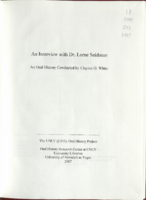
Transcript of interview with Dr. Lorne Seidman by Claytee D. White, November 14, 2006
Date
Archival Collection
Description
Text
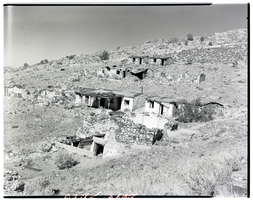
Film transparency of a ghost town, Delamar, Nevada, 1956
Date
Archival Collection
Description
Image
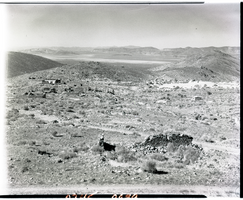
Film transparency of a ghost town, Delamar, Nevada, 1956
Date
Archival Collection
Description
Image

Film transparency of a ghost town, Delamar, Nevada, 1956
Date
Archival Collection
Description
Image
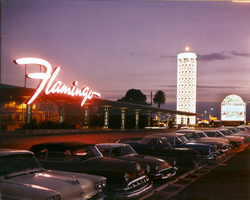
Photograph of the Flamingo Hotel at sunset, Las Vegas, circa mid 1950s
Date
Archival Collection
Description
Image
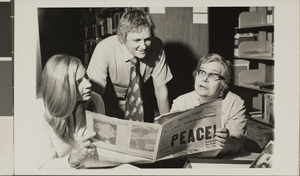
Photograph of individuals at Special Collections, University of Nevada, Las Vegas, September 1975
Date
Archival Collection
Description
From left to right: Susan Jarvis, Hal Erickson, and Alfreda Blood in the Special Collections department at the University of Nevada, Las Vegas (UNLV). They are examining the Leonard T. Blood papers just donated to UNLV Special Collections.
Image
Lawrence Revere Papers
Identifier
Abstract
The Lawrence Revere Papers primarily consist of correspondence between Lawrence Revere and the developers of blackjack betting systems dating from 1965 to 1970. The collection includes information about blackjack gambling systems, correspondence with gambling experts, and press material regarding the publication of Revere's book
Archival Collection
Paul J. Richert Photograph Collection
Identifier
Abstract
The Paul J. Richert Photograph Collection (approximately 1950-1951) consists of black-and-white photographic prints and negatives depicting the swimming pools at the Desert Inn and Flamingo Hotel & Casino in Las Vegas, Nevada. Also included is an image of the Las Vegas High School Rhythmettes dance group and an image of the El Rancho Hotel and Casino in Las Vegas.
Archival Collection
Nadine Tobin Collection of Helldorado Photographs
Identifier
Abstract
The Nadine Tobin Collection of Helldorado Photographs, approximately 1940 to 1959, contains black-and-white photographic prints depicting parade floats during Helldorado Days celebrations in Las Vegas, Nevada. Also included is one image of a primary school class in Las Vegas.
Archival Collection
